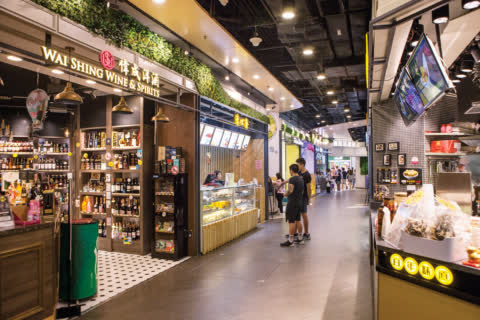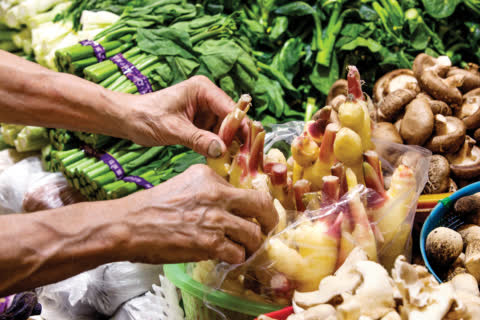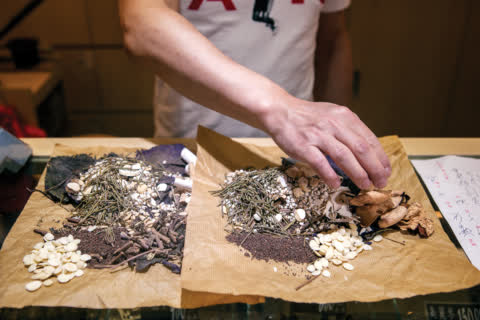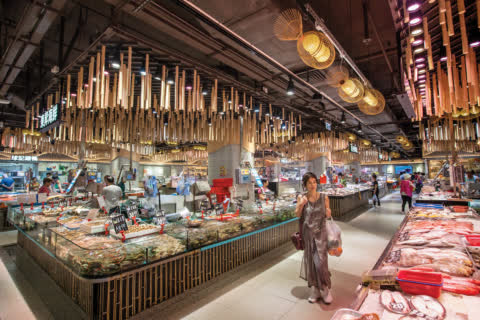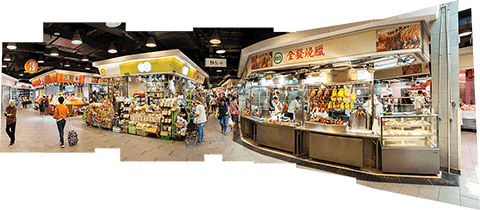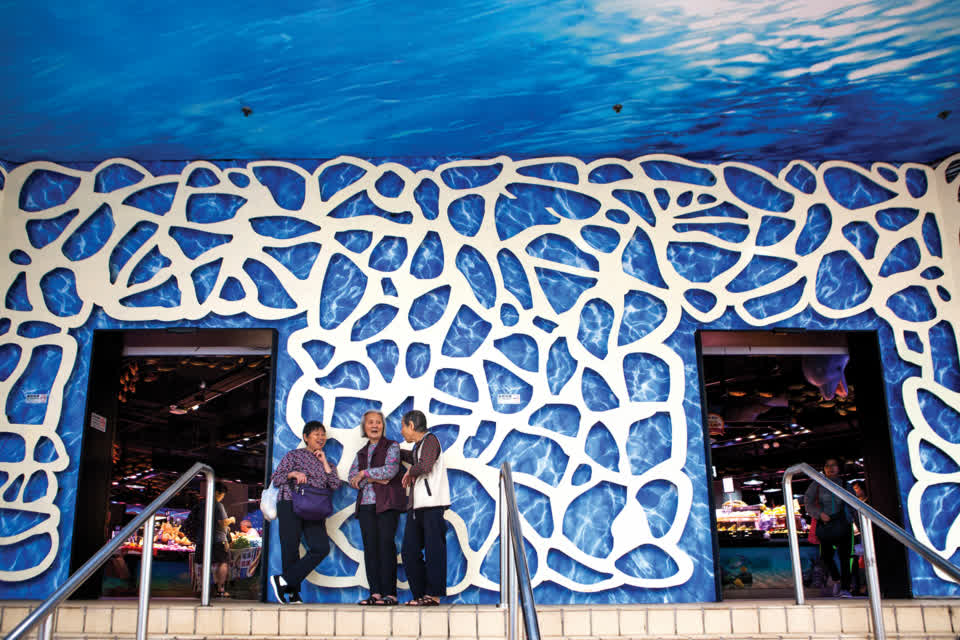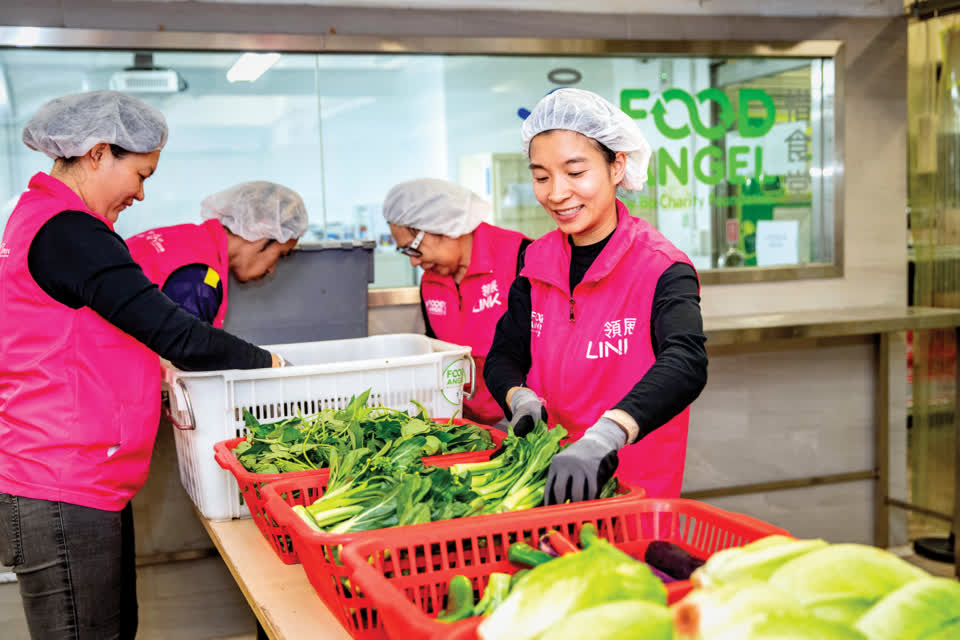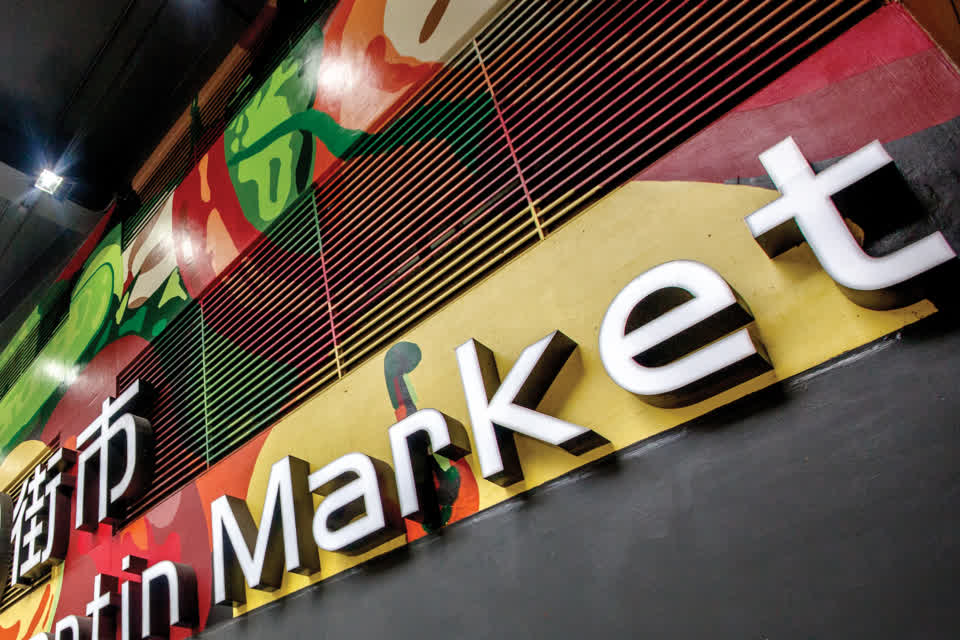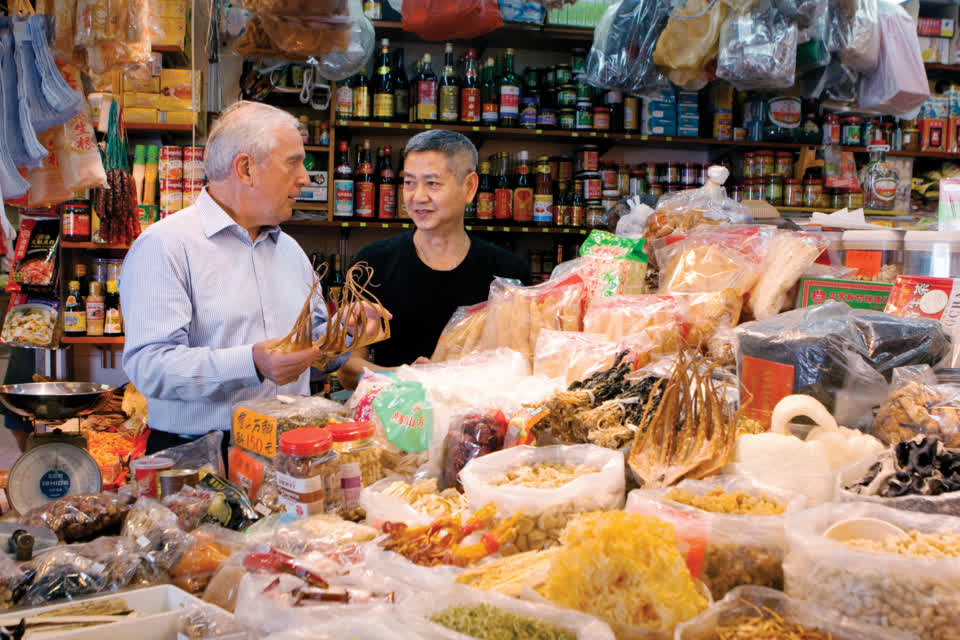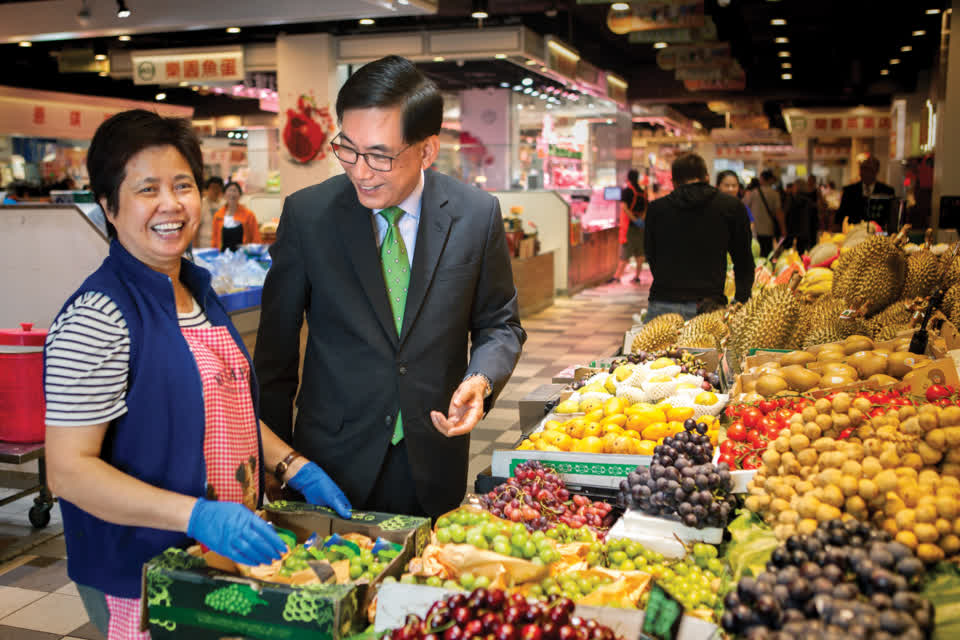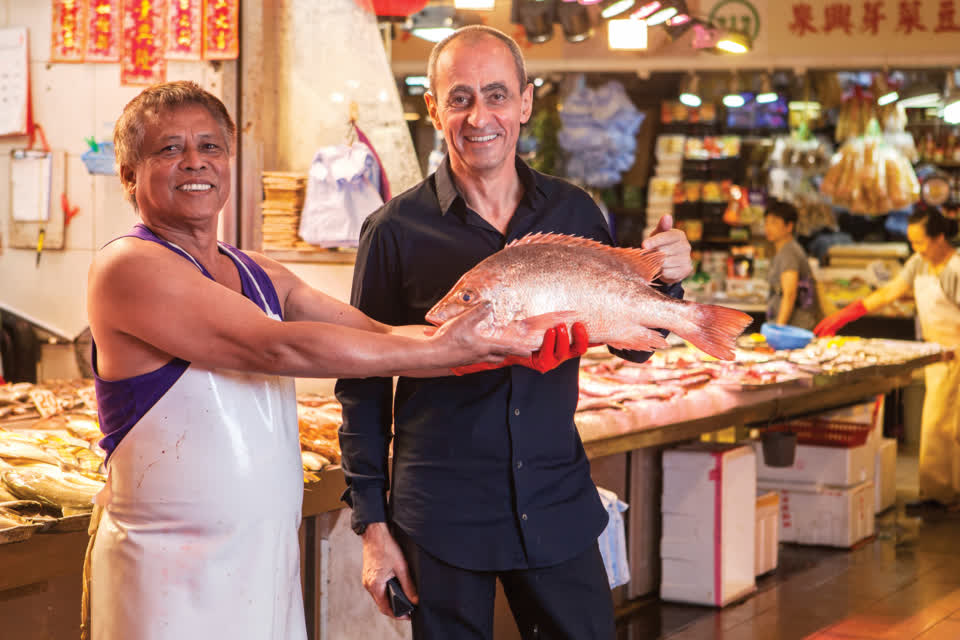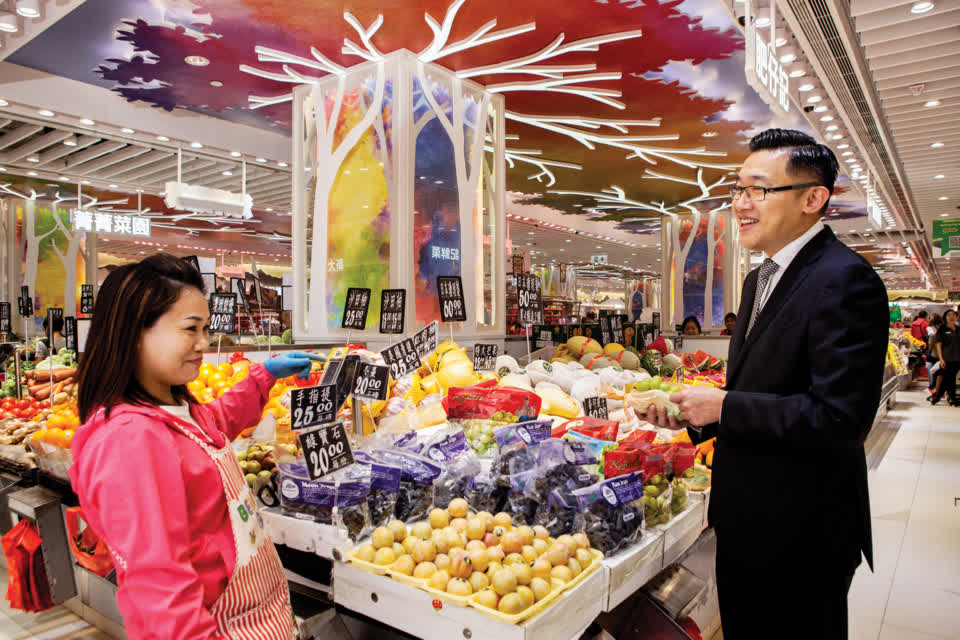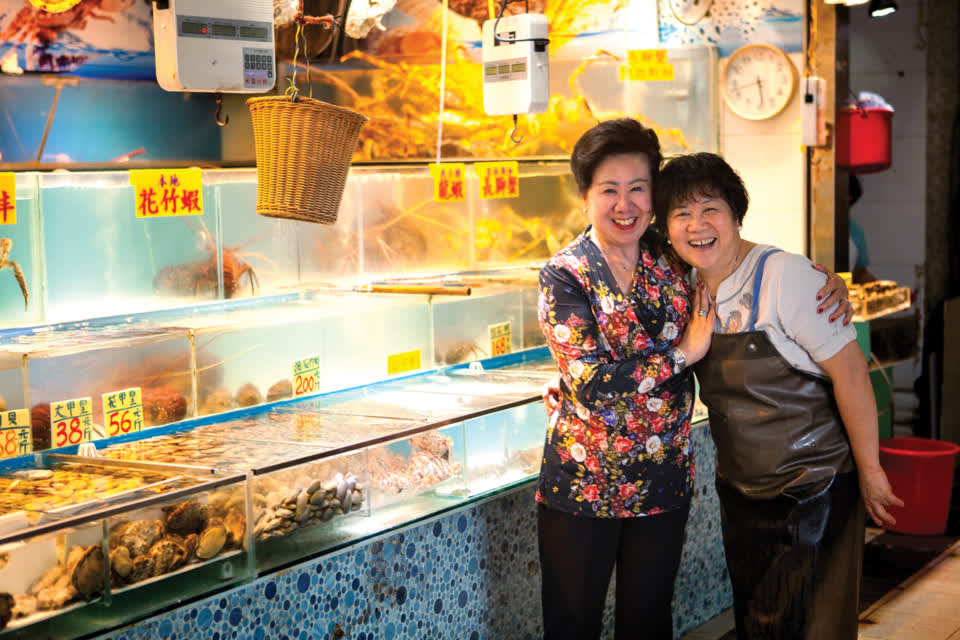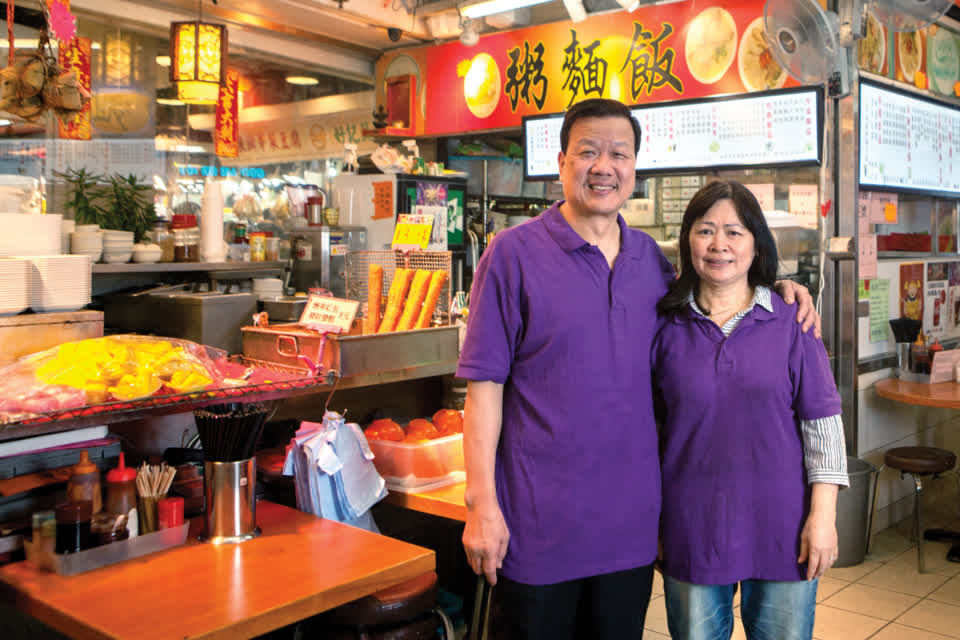The first few years of running the fresh markets were a process of experimentation: trying things to see if they worked, and then tweaking methods to get them right.
“We would look at whether we’re doing some of it right and some of it wrong,” says Sallnow-Smith. “Which bit can we improve? And then of course we would have a dialogue with our tenants about that. We would ask them: ‘Has your business improved or not since we did this?’ There’s a continuous process, which is the great thing about retail. You don’t just start at the beginning and then hope the market improves. All the time you should be continually looking at every aspect of it to see what you can tweak to make it better for you, for the tenant and for the shopping public. It is a process with no end.”
There is such a thing as “trade mix”, which is the right combination of categories of goods being sold in each market, in the right quantities and sufficient variety. Markets in different neighbourhoods of Hong Kong naturally have different characteristics and different demographics. This will affect the mix of tenants.
“There’s a continuous process of improvement, which is the great thing about retail”
“From the start, we were not really looking at how to determine the trade mix, because we didn’t have the exposure before,” says Kong. “But after a few years we learnt how to do it right. We devised our way of analysing a catchment area and its demographic, and this tells us the optimal size of a market and its trade mix. Then we can gradually work out the ideal proportion for wet trade, and the right size for dry trade, and so on.
“We started by plotting all the markets on a map and then planning out which locations would be our higher-profile ‘destination’ markets; similarly, where the smaller communities and neighbourhood markets should be placed. We also drill into the demographic figures, and cross-check them with the spending patterns in our retail malls. Then, we have a better idea for designing a trade mix that could attract shoppers. We also try to avoid cannibalisation among tenants. For example, if we have a neighbourhood shopping centre which has a very big supermarket, we will study the sales of that supermarket. Is the spending power really strong and not fully captured? What’s the trade and product mix in that supermarket? With such useful information, we can fine-tune the fresh market trade mix so that they are complementing each other.”
“We are very happy to see younger customers, and therefore the demand for the products is different”
That’s the starting point, but it’s not the end of it. The quality of the trade mix needs to be maintained as a continuous process.
“Tweaks need to happen constantly to the trade mix,” says Farcis. “Do we need to introduce some new elements into it? Do we need to bring in some additional grab-and-go food at some point? Do we need to put in a small sit-down coffee shop depending on which catchment area we operate in? These sorts of tweaks are ongoing. Basically it is all about looking at the market and curating the market.”
One of the lessons that Hongchoy has learnt through renovating many markets over the years is that it is really important to understand the local community, and the type of shoppers who come to the markets.
“Over time we have expanded the age group the shoppers come from,” he says. “We are very happy to see younger customers, and therefore the demand for the products is different. The challenge of shopping for dinner when they have to work late means we have to encourage our tenants to see if they can keep their stalls open a bit later. As we design the trade mix there has been a change in the type of products on sale. For example, some people demand more organic food. In some of the markets we have cooked food stalls that allow people to take a break and eat something before they continue to shop. And so we are adapting as we go, trying to learn the right combination for each market, because each part of the community is different. We have found that in certain districts in Hong Kong there are more Chiu Chow people, and in certain districts there are more Southeast Asian people, and we adjust the trade mix according to that.”
SHARING EXPERTISE
In June 2019, Hongchoy had just come back from London, where a team of senior staff from Link had taken part in an international public market conference.
The timing was interesting, as it was exactly 10 years since Link had kick-started their first market renovation project, at Tai Yuen in 2009. The years since then had been a process of intense learning, as Link applied the lessons from Tai Yuen to a growing series of market upgrades across Hong Kong. The London conference was a chance to take stock, to look back at a decade of change, and to see how Link’s expertise in conceptualising, designing and running markets had evolved.
“At the London conference, we had three of our colleagues presenting to other market operators from around the world,”
he says. “Compared to our attendance three years ago at the Barcelona market conference, when we were still learning, we are actually very pleased that our colleagues were able to present some of our innovations, show some of the renovation projects that we have done, and share some of our ideas to people from around the world. We showed how it can be done, and how we dealt with challenges not just from designs and engagement, but sometimes even the politics which are involved in upgrading the markets.”
From a student of market design at the earliest conferences it attended, Link has become an equal participant, sharing its experience and expertise with other market operators from around the globe.
“These are ideas that we want to share,” says Hongchoy, “and, hopefully everyone can enjoy their local fresh markets as a result.”

